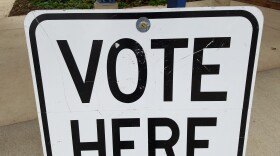The 2016 presidential election was one of the tightest in history, and nowhere is that more apparent than in Michigan.
According to the Michigan Secretary of State, Donald Trump won the state by only 13,107 votes. That’s a tiny .27 percent margin, the closest in state history.
When was the last time a race was so close in Michigan? Way back in 1940.

The United States was just emerging from the Great Depression. Europe was in the midst of war, Gone with the Wind had just won Best Picture, and Franklin D. Roosevelt was running for an unprecedented third term as president.

His opponent wasn’t a politician - he was a businessman, the CEO of an electric company, who disagreed with his party’s isolationist views and wanted to minimize the federal government’s role in the economy. Furthermore, he emerged from an extremely competitive Republican primary as an unlikely candidate.
Sounds familiar, right?
Wendell Willkie was the Republican candidate in 1940.
He ended up winning the popular vote in Michigan by 6,926 votes, which at the time was a .33 percent margin.
It would be misleading to say Willkie held the same views as Trump or that the election of 1940 played out the same as 2016, because outside of Michigan, the results were vastly different.
The issues of 1940 are not the issues of today, and the demographics that can influence national elections have changed significantly.
But both races show that presidential elections in the United States can be unpredictable, with a few thousand votes changing the outcome in a state.




